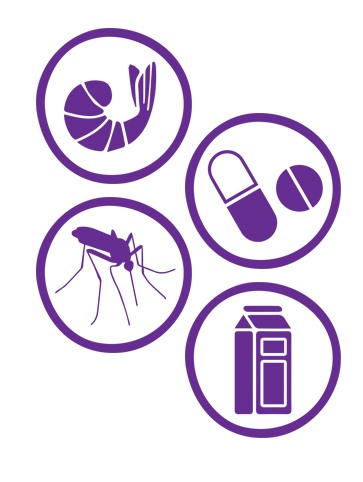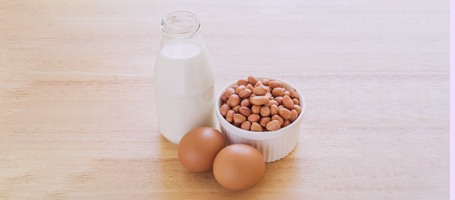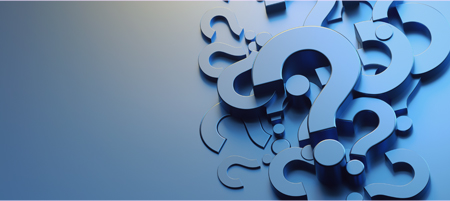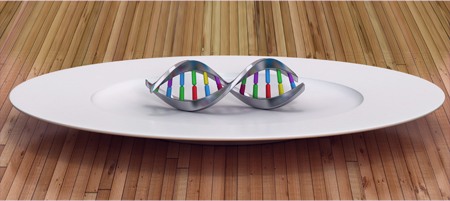What is Angioedema?
Angioedema is a form of edema or swelling underneath the skin or mucosa. It affects the areas of skin where the tissue areas are loose. While all parts of the body can be affected, swelling mostly occurs around the eyes and lips. In severe cases, swelling can also occur in the internal lining of the upper respiratory tracts, intestines and even genitals. It is generally abrupt and short-lived usually caused due to an allergic reaction and not normally serious, but it can be chronic for some people and even life-threatening for an occasional few if breathing is affected due to Angioedema.
What is the difference between Angioedema and Urticaria?
While Angioedema and urticaria might appear to be the same, the biggest point of difference between the two is that urticaria affects the top layer of the skin whereas Angioedema affects the subcutaneous tissue (the tissue beneath the skin.
One can even have urticaria and Angioedema at the same time which is why Angioedema is, sometimes, also referred to as “giant hives”. However, one way to identify is by checking its physical appearance. In case of urticaria, red patches and wheals will appear on the skin very reminiscent of a mosquito bite whereas, if you have red or skin-colored swelling below the surface of the skin, it is usually Angioedema.
What are the causes of Angioedema?
There are several types of Angioedema and each type is caused by different triggers.
- Allergic Angioedema can be caused by insect bites, certain medications such as aspirin and penicillin,latex and food allergies, especially to nuts, shellfish, milk and eggs
- Drug-induced Angioedema can be caused by angiotensin-converting enzyme (ACE) inhibitors
- Hereditary Angioedema can be caused by the presence of a gene that leads to low levels of proteins in the body
- In many cases, the cause of Angioedema is not clear, and this situation is called as idiopathic Angioedema
Other triggers like pregnancy, pollen, animal dander, contraceptive pills, trauma or infection can also cause Angioedema in some people.

What are the different types of Angioedema?
There are four main types of Angioedema:

Allergic
Angioedema –
This is the most common type of Angioedema and is usually
triggered by consumption of or exposure to allergens like
certain food items like milk, eggs, nuts and shellfish, latex,
pollen, pet dander and certain medications. This type of
Angioedema is not chronic and can easily be avoided by
identifying the allergen causing the reaction.

Drug-induced
Angioedema –
Certain medications usually prescribed for hypertension or high
blood sugar have ACE (angiotensin-converting enzyme) inhibitors
in them. These can cause drug-induced Angioedema. If this is the
cause of the swelling, then the doctor will usually prescribe to
change the current medications.

Idiopathic
Angioedema –
Idiopathic means unknown. So, when an idiopathic Angioedema is
diagnosed, that means that despite several tests and checkups,
the cause or trigger of Angioedema is still unknown.

Hereditary
Angioedema –
When several people in a patient’s family have had Angioedema,
that means that the patient’s Angioedema is hereditary. In case
of a hereditary Angioedema, there is a gene present in the body
that leads to low levels of protein C1-esterase inhibitor in the
body. This type of Angioedema has no cure and its symptoms
usually come and go over time.
What are the symptoms of Angioedema?
While symptoms of Angioedema may differ based on its type, the following symptoms are common and can normally be identified:
- Red or skin-colored swelling, usually around the eyes and lips
- Limbs, throat, genitals and tongue can get affected as well
- The outer layer of the skin might not be affected (urticaria may not develop)
- Swelling may or may not be itchy, painful or slightly burning
- In severe cases, swelling in lips and throat might cause difficulty in breathing
- Abdominal cramping may occur in case of swelling in the linings of the intestinal tract
- Dizziness, in very severe cases
How is Angioedema diagnosed?
A doctor will be able to form a diagnosis about the type of Angioedema from the type of symptoms, discussion on the cause of swelling, medications the person is currently on and family and medical history.
For e.g., if you have been exposed to a certain allergen before getting Angioedema, then the cause is usually allergic Angioedema. This will sometimes also be accompanied by hives or urticaria. Skin prick testing may be done to identify allergens If there is a history of Angioedema present in the family, then that may be a sign of hereditary Angioedema and the doctor may run the following tests to diagnose it -
- A blood test to check for C1 esterase inhibitor
- Checking levels of complement components, like C2 and C4
How is Angioedema treated?
Angioedema is best treated by an Allergist.
While acute Angioedema mostly settles by itself in a few days, certain treatments can help settle it faster. These treatments will depend on the type and cause of Angioedema:
- Allergic and idiopathic Angioedema are usually treated with antihistamines and/or corticosteroids
- Drug-induced Angioedema can be treated simply by switching to a different medicine that does not have ACE inhibitors
- Although hereditary Angioedema cannot be cured, swelling can be treated or prevented by help of certain medications
When to seek emergency medical help?
In cases where the respiratory tract or the lips are swollen, a person may find difficulty in breathing. The top priority in this case is to ensure a free airway.
In such a scenario, it is important to rush the patient to the hospital for incubation i.e., placement of a tube in the throat to keep the airway open. Sometimes, severe Angioedema may be due to anaphylaxis, a life-threatening, severe allergic reaction which always calls of emergency medical attention.
Frequently Asked Questions:
Depending on its type, Angioedema can be caused through any of the following triggers – insect bites, pollen, pet dander, certain medications like aspirin, penicillin and ACE inhibitors containing medicines, latex and certain types of foods.
If an Angioedema leads to blockage of airways (sometimes happens when the swelling is on the lips or in the respiratory tract), a person may find difficulty in breathing. In such a scenario, medical help is required to place a tube in the throat to keep the airways free.
Certain factors that can increase the risk of Angioedema in a person are -
- Previous episode of Angioedema or urticaria
- Previous allergic reaction
- A family history of Angioedema
- Certain medical conditions
- Stress, trauma or anxiety
